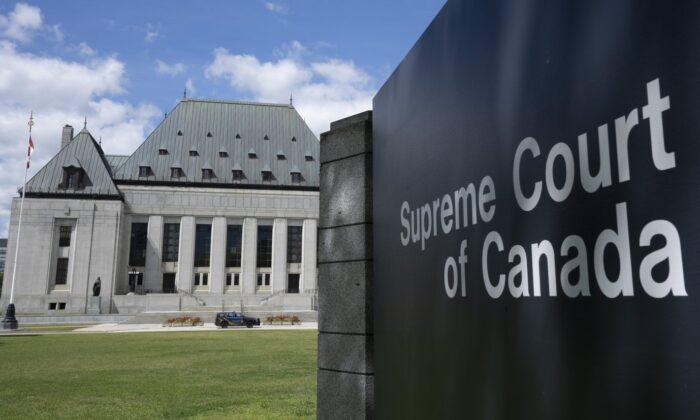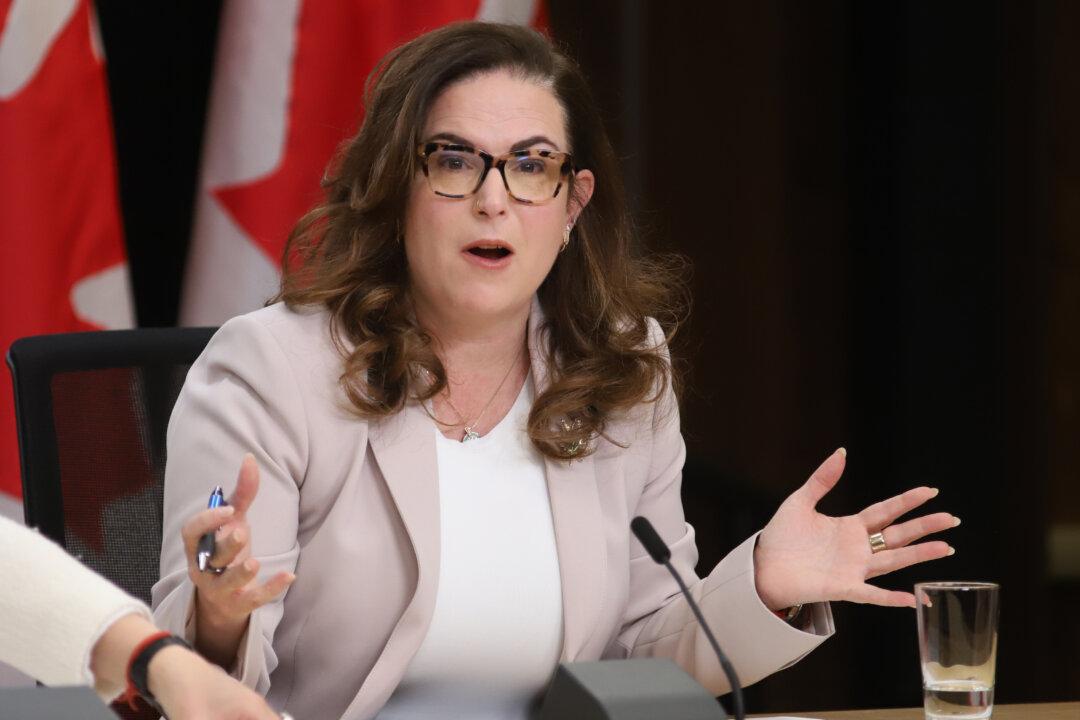The federal government and several provinces are in a tug of war over the power to regulate natural resource and development projects. Canada’s Supreme Court heard two days of testimony on March 21 and 22 to help it decide if Ottawa’s Impact Assessment Act (IAA) is constitutional.
The law, known as Bill C-69 before it received royal assent, was dubbed by former Alberta premier Jason Kenney as the “no more pipelines” law because of the regulatory burden it puts on major infrastructure projects. It allows Canada’s environment minister to flag a project—be it a pipeline, a housing development, or highway construction—as potentially having adverse environmental or socio-economic impacts.
Division of Powers
The IAA is a “profound threat to provincial areas of jurisdiction under the division of powers” enshrined in the Constitution, Alberta argued in its factum to the Supreme Court. These include “exclusive powers over natural resources, local works and undertakings, and property and civil rights.”The appeal says the Alberta court relied on “discredited reasoning” that sees resource projects as either federal or provincial. It asks the Supreme Court to instead uphold a “cooperative federalism” approach. This is an impacts-based approach, where Parliament has authority if a project might impact some area of federal jurisdiction, such as aquatic or migratory wildlife.
Justice Malcolm Rowe criticized this approach during the hearings on March 21 and 22, accusing the AG of “slipperiness.”
“There is some impact on aquatic species—now I’m going to take into account greenhouse gases. Now I’m going to take into account employment equity. Now I’m going to take into account treaty obligations,” Rowe said.
Climate Change
The federal government’s emissions targets and stance on climate change is one of the key reasons the government will actually shut down projects, Rowe said.He gave the example of Highway 413 in Ontario, which Rowe said is held up by the IAA “nominally because of a frog” it endangers. But really it’s “because we’re not supposed to be driving cars.”
The Supreme Court was asked to make a similar decision in 2021 related to a carbon tax, and that decision is being hailed as a bellwether.
At the recent hearings, Justice Mahmud Jamal also brought up this test for national concern. He said the spreading of greenhouse gases beyond provincial borders may put a project in federal jurisdiction. “If Canada doesn’t have jurisdiction, who does?” he asked, referring to the federal government.
In the carbon tax decision, justices Rowe and Russell Brown dissented, and Justice Suzanne Côté dissented in part.
Rowe again came on strongly in favour of the provinces at the recent IAA hearings, and so did Côté. Brown was absent as the Canadian Judicial Council reviews a complaint about him.
Only seven judges will decide this time, as Justice Michelle O’Bonsawin is sitting out to avoid a tie with an even number of judges in Brown’s absence.
Justice Andromache Karakatsanis asked the AG’s counsel, Christopher Rupar, repeatedly about how significant the potential impacts have to be for the government to initiate the IAA.
Karakatsanis and other judges, particularly Côté, pressed Rupar for more details on thresholds, though the details he gave were few.
Threshold for IAA to Start
Rupar said the effects have to be “significant” for the minister to shut down the project in the end. Karakatsanis noted that “significant” is imprecise.In terms of what allows the minister to start the IAA process in the first place, Rupar read from the legislation, which says the minister has “to be of the opinion that the physical activity may cause the adverse effects within the federal jurisdiction or adverse and incidental effects or public concerns relating to them.”
Jamal stepped in to clarify for Rupar that the IAA is “an information-gathering tool,” so the scope of the effects isn’t known with precision before the process starts. Jamal said the court will have to look at whether there is a constitutional question related to this.
Côté said if she were a project manager, just having the IAA start “means that my project is frozen for months and even years.” ”Don’t you think that is rather broad?” she said of the criteria for IAA starting.
Ontario’s lawyer, Joshua Hunter, said there’s no definition of the level of significance required. “If the [environment] minister thinks there’s ‘public concern’ about potential impacts,” that’s enough to start the assessment, he said.
Hunter gave the example of how Environment Minister Steven Guilbeault earlier this week invoked the IAA regarding a housing development project in Ontario’s Greenbelt. “If he doesn’t like the results of that study, he’ll shut down development needed to provide Ontarians with homes,” Hunter said.
Rowe joked about concern for woodpeckers being the reason the federal government has control over the provincial housing project.
Rupar said a judicial review can always decide whether the federal government has overstepped its bounds in specific cases.
Others testified at the hearings, with 29 interveners, including environmental groups, First Nations and other indigenous groups, industry organizations, and various provincial AGs.
Environmental testimony included the argument that the federal government has jurisdiction in a matter of national concern—climate change. First Nations advocates argued that provincial impact assessments for some projects may be inadequate to protect indigenous rights.
The Supreme Court’s decision will only be advisory, as it was in the carbon tax case. Though the Alberta court’s decision was also not binding, the federal government chose to appeal it to the Supreme Court to try to affirm the law’s legitimacy.
“Now that we have a real evaluation and impact assessment for projects, we will come to the conclusion that many of these projects are incompatible with the goals we have for 2030,” he said, referring to emission-reduction goals of the federal government.






Friends Read Free